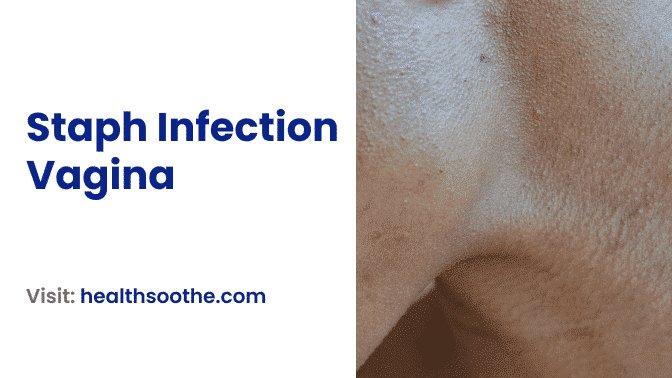Staphylococcus is a genus of bacteria that causes staphylococcal infections, sometimes known as staph infections. There are more than 30 different Staphylococcus bacterial strains.
Staphylococcus aureus is the most prevalent human pathogen. An organism that causes illness is called a pathogen.
Antibiotics are prescribed by medical professionals to treat staphylococcal infections. A staph infection may, in extreme situations, result in fatal health problems and other major issues.
Read Also: Query: Can Yoni Pearls Cure Staphylococcus?
What areas of your body are staph infections affecting?
Distinct regions of your body are affected negatively by various staph bacterium kinds. Infection with Staphylococcus may harm the:
Skin: Staphylococcus aureus germs most often cause skin infections. Boils, blisters, and skin redness may result from this. Anywhere on your body, including your face often in the mouth and nose area can develop these infections.
Breasts/chest: Mastitis, which results in inflammation (swelling) and abscesses (collections of pus) in the breasts, may occur in breast-feeding (chest-feeding) individuals.
Digestive system: Food poisoning, which causes vomiting and diarrhoea, may occur if you ingest anything that contains germs.
Your bones may get infected by the bacteria, which may result in discomfort and inflammation. Osteomyelitis is the term for this infection.
Lungs and heart: If the germs enter your lungs, they may cause abscesses that can lead to [mfn]pneumonia[/mfn] and other breathing issues. Additionally, staph infection may harm heart valves, which might result in heart failure.
Bloodstream: Septicemia, often known as blood poisoning, is a dangerous sickness that may happen when germs release toxins into your body.
How widespread are staph infections?
The majority of the millions of skin staph infections are minor and treatable with medicines. Staphylococcus bacteria often reside in the nose or on the skin, even if you are healthy.
The germs might create issues if they enter your body. When they do, your body becomes the host to hundreds of severe staph infections.
Who is affected by staph infection?
Even while anybody may get staph, certain individuals are more vulnerable than others. The [mfn]bacterium[/mfn] is more likely to be on the skin of people who work in hospitals. Staph infections often affect those who:
- inject medicine.
- People that are in the hospital, have just had surgery, or have catheters or other medical equipment inside of them.
- Control a chronic ailment like eczema, diabetes, or vascular disease.
- possess a compromised immune system.
- if they breastfeed.
- have been using tampons for a long time.
- possess congenital cardiac flaws.
- have had further heart valve operations.
Which staph infections do kids often get?
Children often get staph infections known as impetigo and styles. Infections like this and wounds that might get infected are often seen in newborns and young children.
Staph infections in children may result in blisters, lumps that resemble pimples, fevers, chills, and other symptoms of illness. Any of these symptoms should be discussed with your healthcare physician as soon as possible.
What are the telltale signs and symptoms of a skin-infected staph infection?
The location of the infection on your body affects the symptoms of a staph infection. Your skin is where staph infections most often occur.
They often have the appearance of pus-filled, furious red pimples. They might spill the liquid. You could believe you have ingrown hair or a kind of bite.
Skin-related staph infection symptoms and signs include:
Boils and abscesses: These uncomfortable lesions that develop under your skin cause pain and redness.
Cellulitis: This form of infection results in swollen, red, uncomfortable skin and tissue close to your skin.
Folliculitis: A tiny, painful blister that resembles a pimple develops beneath your hair follicle.
Impetigo: Blisters or sores that are fluid-filled develop, burst, and leave a crust of yellow or brown colour.
Skin starts to peel off all over your body as a result of the dangerous illness staphylococcal scalded skin syndrome (SSSS). Infants and young children are commonly affected.
These staph infections often begin with sensitive, warm, and reddened regions. As they worsen, you could see pus or discharge along with enlarging red spots. Some skin infections caused by Staph may develop into open sores.
What physical symptoms and indicators are associated with a staph infection?
Staph infections may create a number of illnesses with unique symptoms when they affect parts of your body other than your skin. These ailments and their signs consist of:
Food poisoning may have severe symptoms, such as vomiting and diarrhoea.
Mastitis: This condition, which mostly affects breastfeeding women, causes swelling, discomfort, and abscesses.
Staph bacteria, often known as sepsis, may poison your blood and produce septicemia. Fever and dangerously low blood pressure are among the symptoms (hypotension).
The symptoms of toxic shock syndrome (TSS), a severe [mfn]type of septicemia[/mfn], include fever, muscular pains, and a rash that resembles a sunburn.
Endocarditis: Staph infections often result in this inflammation of the lining of the heart muscle. Your heart muscle and heart valves may both be impacted. Fever, sweating, weight loss, and a rapid heartbeat are symptoms.
How are staph infections identified?
Depending on the part of the body that is afflicted, your doctor will evaluate if you have a staph infection. Staph infections on your skin are plain to observe.
To determine the presence and kind of bacteria, doctors often use Gram stain and bacterial culture tests.
Skin: Staph infections on the skin are often diagnosed by inspecting the afflicted region. To check for germs, your healthcare professional can decide to collect a skin sample.
Food poisoning: Tell your doctor how sick you’ve been and how severe your symptoms are. You may have to provide a sample of your faeces.
Mastitis: After taking into account your symptoms, your healthcare professional could send a sample of your milk to a lab for a bacterial count test.
Your healthcare professional could collect a urine or blood sample to look for microorganisms in toxic shock syndrome. To determine if the illness has affected your organs, they may sometimes additionally request a CT scan.
Endocarditis: An echocardiography, blood tests, and your symptoms will all be used by your doctor to make this diagnosis.
How can I tell if I’m infected with staph?
Contact your healthcare professional for a diagnosis and treatment if you are experiencing signs of a staph infection. If you or your kid develops a blistered, irritated, or reddened region of skin, particularly if a fever is present, see your healthcare professional. A staph infection can only be identified and managed by medical professionals.
You may, for example, use a pen to trace a circle around the red area to observe whether it keeps expanding. Call your physician immediately if the redness becomes larger than the outline.
What are the staph infection treatments?
A topical antibiotic is effective in treating the majority of skin-related staph infections (applied to your skin). In order to release the pus from an abscess or boil, your healthcare practitioner may make a tiny cut.
Both internal and external staph infections may be treated with oral antibiotics, which are taken by mouth. Depending on the kind of illness, the antibiotic will change. Providers utilise IV (intravenous) medicines to eradicate the germs in severe staph infections.
Your doctor may advise that you spend some time in the hospital if you have a more severe staph infection that needs an IV.
Conclusion
Neonatal Staphylococcal infections cause serious morbidity and death. Even while CoNS are often the source of less serious infections, more aggressive ones continue to produce a reasonably significant number of infections in the community and hospitals.






